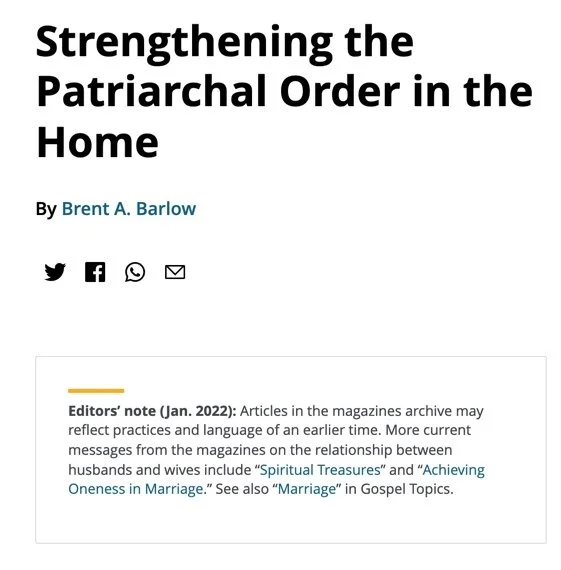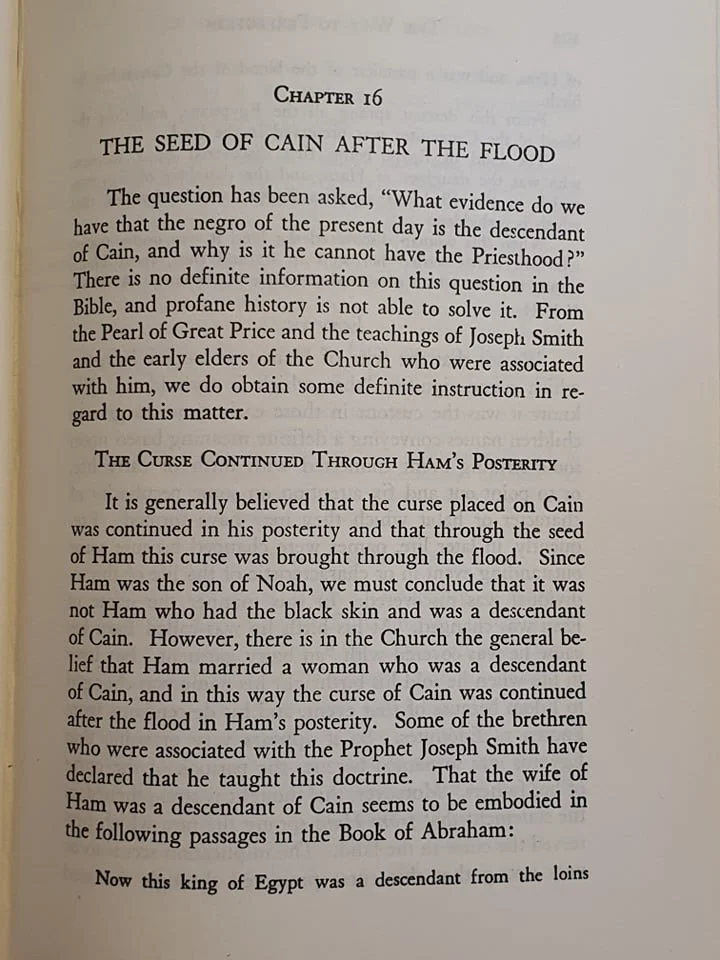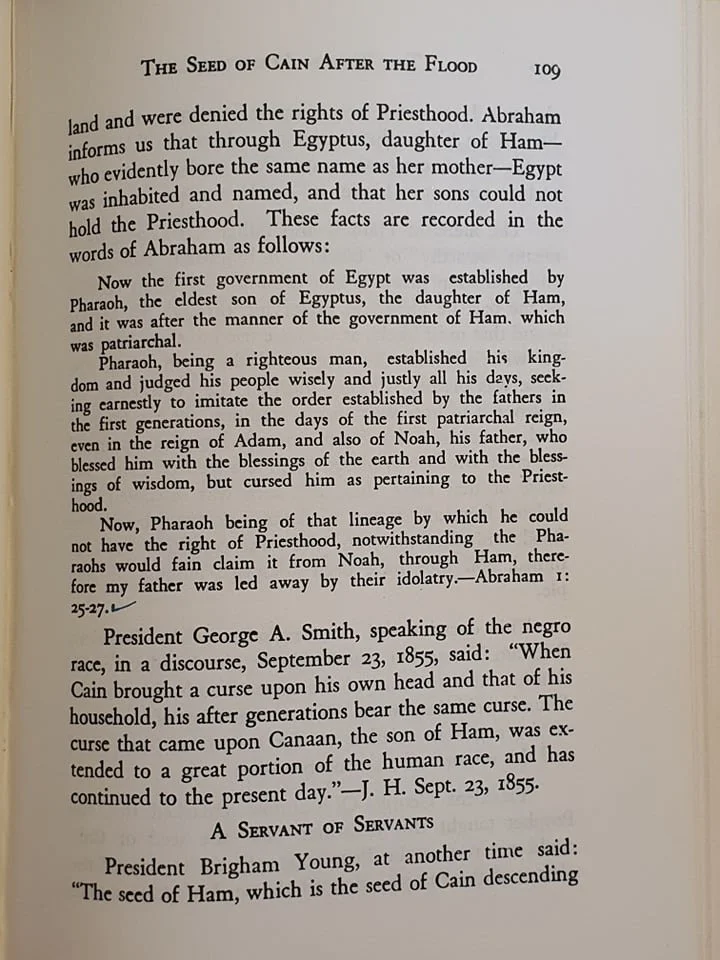Come, Follow Me: Old Testament - Genesis 3–4; Moses 4–5
Week 3: January 10th – January 16th
Week 3 of the ‘Come, Follow Me’ lesson starts to focus more on Adam and Eve and how they get cast out of the Garden of Eden. The lesson states:
At first, the story of the Fall of Adam and Eve might seem like a tragedy. Adam and Eve were cast out of the beautiful Garden of Eden. They were thrown into a world where pain, sorrow, and death are ever present (see Genesis 3:16–19). And they were separated from their Heavenly Father. But because of the truths restored through the Prophet Joseph Smith in the book of Moses, we know that the story of Adam and Eve is actually one of hope—and an essential part of God’s plan for His children.
The Garden of Eden was beautiful. But Adam and Eve needed something more than beautiful surroundings. They needed—and we all need—an opportunity to grow. Leaving the Garden of Eden was the necessary first step toward returning to God and eventually becoming like Him. That meant facing opposition, making mistakes, learning to repent, and trusting the Savior, whose Atonement makes possible progression and “the joy of our redemption” (Moses 5:11). So when you read about the Fall of Adam and Eve, focus not on the seeming tragedy but on the possibilities—not on the paradise Adam and Eve lost but on the glory their choice allows us to receive.
One thing that really doesn’t make sense about the Adam/Eve story is that they were essentially like children when they were in the garden, and they would have had no understanding of what “wrong” is or what consequences would entail. The whole idea of a God giving two people he created (and supposedly loves) a taste of paradise only to set them up to fail seems so twisted - they would not have had any concept of dishonesty so putting them in a situation where they would be lied to is just cruel and unfair.
If Adam and Eve needed something more than “beautiful surroundings” then why did they have to start in the garden at all? The story at first glance makes it seem like Adam and Eve knowingly sinned and it was an active choice they made…in actual fact if you examine the LDS belief of their “fall” is a “necessary first step” and the fact that they had never before faced deception you can begin to understand that the odds were stacked against them, God made them naive and trusting and then punished them for not knowing better.
Scripture study
Genesis 3:1–7; Moses 4; 5:4–12: The Fall was a necessary part of God’s plan to redeem His children.
Adam and Eve’s Fall brought physical and spiritual death into the world. It also brought adversity, sorrow, and sin. These all seem like reasons to regret the Fall. But the Fall was part of Heavenly Father’s plan to redeem and exalt His children through “the sacrifice of the Only Begotten of the Father” (Moses 5:7). As you study Genesis 3:1–7; Moses 4; 5:4–12, what truths do you find that help you understand the Fall and how Christ’s Atonement overcomes it? Questions like these might help:
How did the Fall affect Adam and Eve? How does it affect me?
Why did Adam and Eve offer sacrifices? What did those sacrifices symbolize? What can I learn from the angel’s words in these verses?
Why were Adam and Eve “glad” after their Fall? What do I learn from this account about God’s plan to redeem me through Jesus Christ?
Because of the Book of Mormon and other latter-day revelations, we have a unique perspective on the Fall. For example, consider what the prophet Lehi taught his family about Adam and Eve in 2 Nephi 2:15–27. How do Lehi’s teachings clarify what happened in the Garden of Eden and help us understand why it was important?
See also 1 Corinthians 15:20–22; Mosiah 3:19; Alma 12:21–37; Doctrine and Covenants 29:39–43; Articles of Faith 1:3; Dallin H. Oaks, “The Great Plan,” Ensign or Liahona, May 2020, 93–96; Dallin H. Oaks, “Opposition in All Things,” Ensign or Liahona, May 2016, 114–17; Jeffrey R. Holland, “Where Justice, Love, and Mercy Meet,” Ensign or Liahona, May 2015, 104–6.
In essence, there is some reference to the idea that “the Fall was part of Heavenly Father’s plan to redeem and exalt His children through “the sacrifice of the Only Begotten of the Father’ (Moses 5:7)”. It seems like the whole situation was orchestrated so that God could “save” people from a situation he was ultimately responsible for, treating his creations like pawns. It wasn’t Adam and Eve who brought physical/spiritual death, adversity, sorrow, and sin into the world, it was God.
The lesson advises readers to study the verses and see what “truths” they find which help them to “understand the Fall and how Christ’s Atonement overcomes it”. This is again another example of them using the word truth in a way that doesn’t really mean that it is something that is in accordance with fact or reality. The truth is that we have no evidence to say that Adam and Eve ever existed, and we have no evidence that God even exists. Ultimately if you care about truth and believing true things then you should examine what you believe and why you believe it. Taking stories from scriptures and asking/answering questions about these stories without questioning their truth and authenticity can lead to fallacious beliefs. The truth is that we have strong evidence that suggests the Book of Abraham and the book of Moses are fake, their truth matters because so much of the LDS belief system is built on these books - should these prove to be false then so much of their theology falls away.
Genesis 3:16; Moses 4:22: What does it mean that Adam was to “rule over” Eve?
This passage of scripture has sometimes been misunderstood to mean that a husband is justified in treating his wife unkindly. In our day, the Lord’s prophets have taught that while a husband should preside in the home in righteousness, he should see his wife as an equal partner (see “The Family: A Proclamation to the World” [ChurchofJesusChrist.org]). Elder Dale G. Renlund and Sister Ruth Lybbert Renlund explained that a righteous husband “will seek to minister; he will acknowledge error and seek forgiveness; he will be quick to offer praise; he will be considerate of family members’ preferences; he will feel the great weight of responsibility to provide ‘the necessities of life and protection’ for his family; he will treat his wife with the utmost respect and deference. … He will bless his family” (The Melchizedek Priesthood: Understanding the Doctrine, Living the Principles [2018], 23).
This explanation feels very disingenuous because the church does not treat men and women as equal, and as much as they now try and distance themselves from direct teaching about men being unquestionable it has not changed the fact that women are still not equal.
This article is a recent example of changes being made to older articles that are very explicit in the roles that a husband and wife have.
This article advises young men that“by understanding the patriarchal order of marriage, a young Latter-day Saint man will be selective in choosing a wife who understands the manner in which he is to preside during their marriage”. It also advised that “modern revelation declares how one holding the priesthood will officiate and gives needed insights into how a man will preside as a priesthood holder, particularly over his wife and family”.
The article goes on to warn that whenever a wife is allowed to challenge the right of her husband to officiate in the home it will have consequences.
In the Editors’ comments it advises that the article may “reflect practices and language of an earlier time” but this was not uncommon teaching. The Family Proclamation states that “by divine design, fathers are to preside over their families in love and righteousness and are responsible to provide the necessities of life and protection for their families. Mothers are primarily responsible for the nurture of their children”. There is a clear separation of duties, and the husband is the one that presides over the family.
As pointed out last week even the women who hold higher positions in the Church state that when a sister has an issue with the way they are being treated by the brethren they should look to themselves first and see how they can change - it is not up to the brother to behave in a better way.
In the Spiritual Treasures article it says “every woman and every man who makes covenants with God and keeps those covenants, and who participates worthily in priesthood ordinances, has direct access to the power of God”. But the fact is that according to LDS theology while women might have access to this power (something that was previously said to be only for men) they do not have the power to administer it (see Power in the Priesthood).
Moses 5:4–9, 16–26: God will accept my sacrifices if I offer them with a willing and obedient heart.
Adam and Eve learned that animal sacrifices were symbolic of Christ’s atoning sacrifice, and they made this “known unto their sons and their daughters” (Moses 5:12). As you study Moses 5:4–9, 16–26, consider the different attitudes of two of their sons, Cain and Abel, toward these sacrifices. Why did the Lord accept Abel’s sacrifice but not Cain’s?
What kinds of sacrifices does the Lord ask of you? Is there anything in Moses 5:4–9, 16–26 that changes the way you think about those sacrifices?
See also Psalm 4:5; 2 Corinthians 9:7; Omni 1:26; 3 Nephi 9:19–20; Moroni 7:6–11; Doctrine and Covenants 97:8; Jeffrey R. Holland, “Behold the Lamb of God,” Ensign or Liahona, May 2019, 44–46.
Another way that the LDS church has a different spin on biblical events is the way in which they portray the sacrifices given by Cain and Abel. In the Old Testament Instructor’s Guide it suggests reading selected pages (98, 100-101) from Joseph F. Smith’s ‘The Way to Perfection’ to better understand Cain’s thoughts and actions. If you have a copy of this book you might know that it is full of racist ideas that even the LDS church deny believing. I have added a couple of chapters of the book below, including the pages which are recommended reading.
These chapters coupled with the story of events told in Moses 5 show that they have a very different way of viewing the actions of Cain. In the Bible we get a different/less details version of events, Genesis 4:3-7 states:
“And in process of time it came to pass, that Cain brought of the fruit of the ground an offering unto the Lord. And Abel, he also brought of the firstlings of his flock and of the fat thereof. And the Lord had respect unto Abel and to his offering: But unto Cain and to his offering he had not respect. And Cain was very wroth, and his countenance fell. And the Lord said unto Cain, Why art thou wroth? and why is thy countenance fallen? If thou doest well, shalt thou not be accepted? and if thou doest not well, sin lieth at the door. And unto thee shall be his desire, and thou shalt rule over him.”
Arguable where it says “But unto Cain and to his offering he had not respect” it just implies that God was not satisfied with the sacrifice made because it was not worthy of respect. In the Bible there is no indication that Satan was involved in any way, if Cain truly worshipped the devil then this would have been an important piece of information to divulge. It is interesting that this was only written into the canon scriptures (which in my opinion are demonstrably false books). Without taking into account the canon scripture you would not be able to reach the same conclusions as the LDS church believes and it radically changes the whole narrative. This is another reason why questioning their truth and authenticity is necessary, there is so much taken from these books which doesn’t correlate to the events as spoken in the Bible so having these extraordinary claims you should require more stringent proof.
Key Questions:
Did Adam and Eve get to make an informed choice about the benefits of eating from the tree of knowledge?
How do I know that the Book of Abraham and the Book of Moses are real? Is my belief based on faith or evidence?
If the Prophets speak for God then why do they keep getting it wrong?
If women have access to the Priesthood then why has this not been explicitly taught the whole time?
If a man having dominion over a woman is seen as an “outdated view” then what stop current teachings about women administering the priesthood from changing in a few years for the same reason? Can I believe what the Prophet says if this is the case?
What damage can Church policies have on active or ex-members of the Church? Is it worth causing this damage by upholding a system that could be wrong?
Additional information - The Book of Abraham
Originally, Joseph claimed that this record was written by Abraham “by his own hand, upon papyrus” – a claim still prominent in the heading of the Book of Abraham. This claim could not be evaluated for decades as many thought the papyri were lost in a fire. The original papyrus Joseph translated has since been found and, as stated in the Church’s July 2014 Translation and Historicity of the Book of Abraham essay, “scholars have identified the papyrus fragments as parts of standard funerary texts...[that] date to between the third century B.C.E. and the first century C.E., long after Abraham lived.”
We know this is the papyrus that Joseph used for translation because the hieroglyphics match in chronological order to the hieroglyphics in Joseph’s Kirtland Egyptian Papers, which contains his Grammar & Alphabet of the Egyptian Language (GAEL). Additionally, the papyrus were pasted onto paper which have drawings of a temple and maps of the Kirtland, Ohio area on the back and they were companied by an affidavit by Emma Smith verifying they had been in the possession of Joseph Smith.
Egyptologists have also since translated the source material for the Book of Abraham and have found it to be nothing more than a common pagan Egyptian funerary text for a deceased man named “Hor” around first century C.E. In other words, it was a common Breathing Permit that the Egyptians buried with their dead. It has nothing to do with Abraham or anything Joseph claimed in his translation for the Book of Abraham. The Church admits this in its essay:
None of the characters on the papyrus fragments mentioned Abraham’s name or any of the events recorded in the book of Abraham. Mormon and non-Mormon Egyptologists agree that the characters on the fragments do not match the translation given in the Book of Abraham, though there is not unanimity, even among non-Mormon scholars, about the proper interpretation of the vignettes on these fragments. Scholars have identified the papyrus fragments as parts of standard funerary texts that were deposited with mummified bodies. These fragments date to between the third century B.C.E. and the first century C.E., long after Abraham lived.
If you want to see more information on this check out the CES letter here: https://read.cesletter.org/boa/#papyrus-found
















